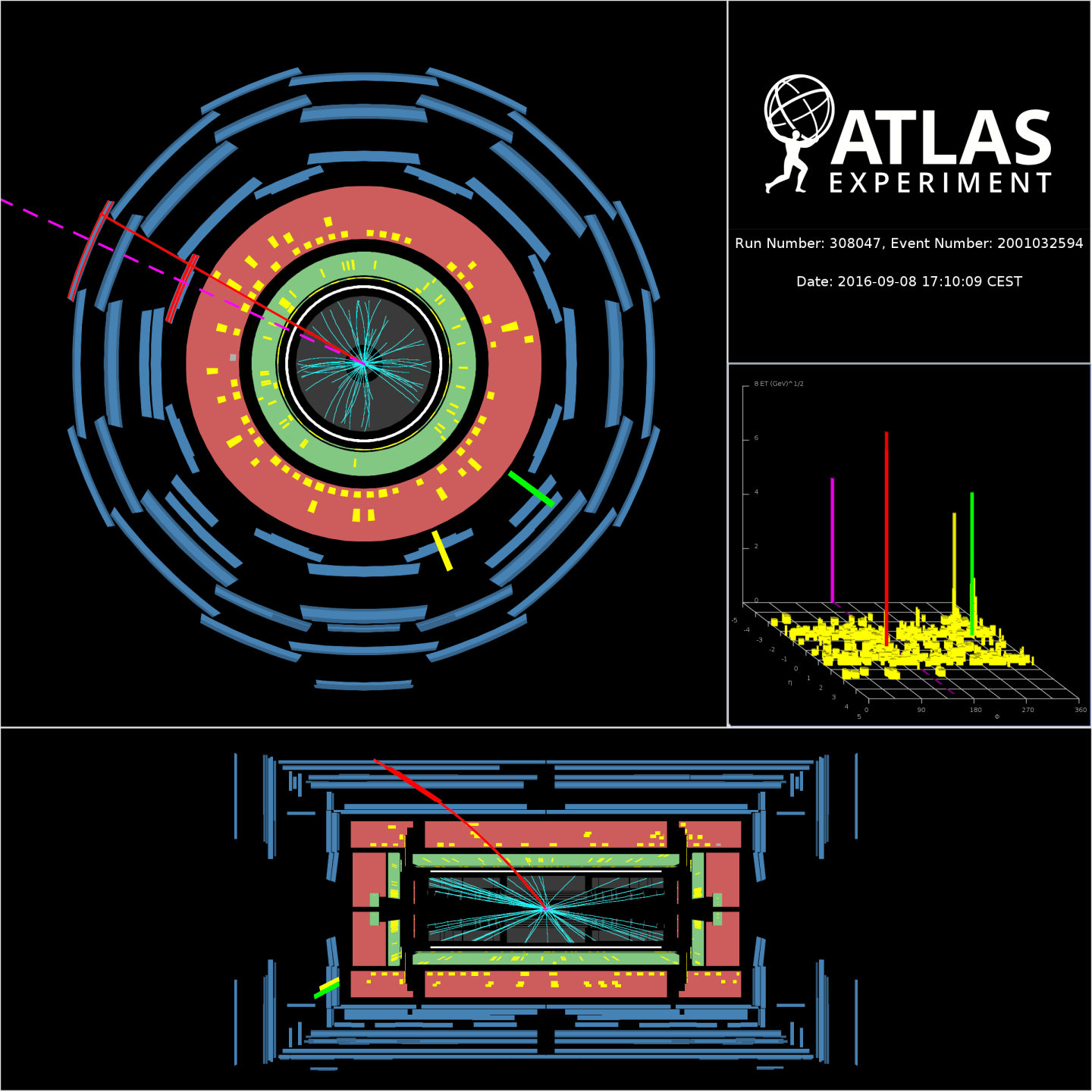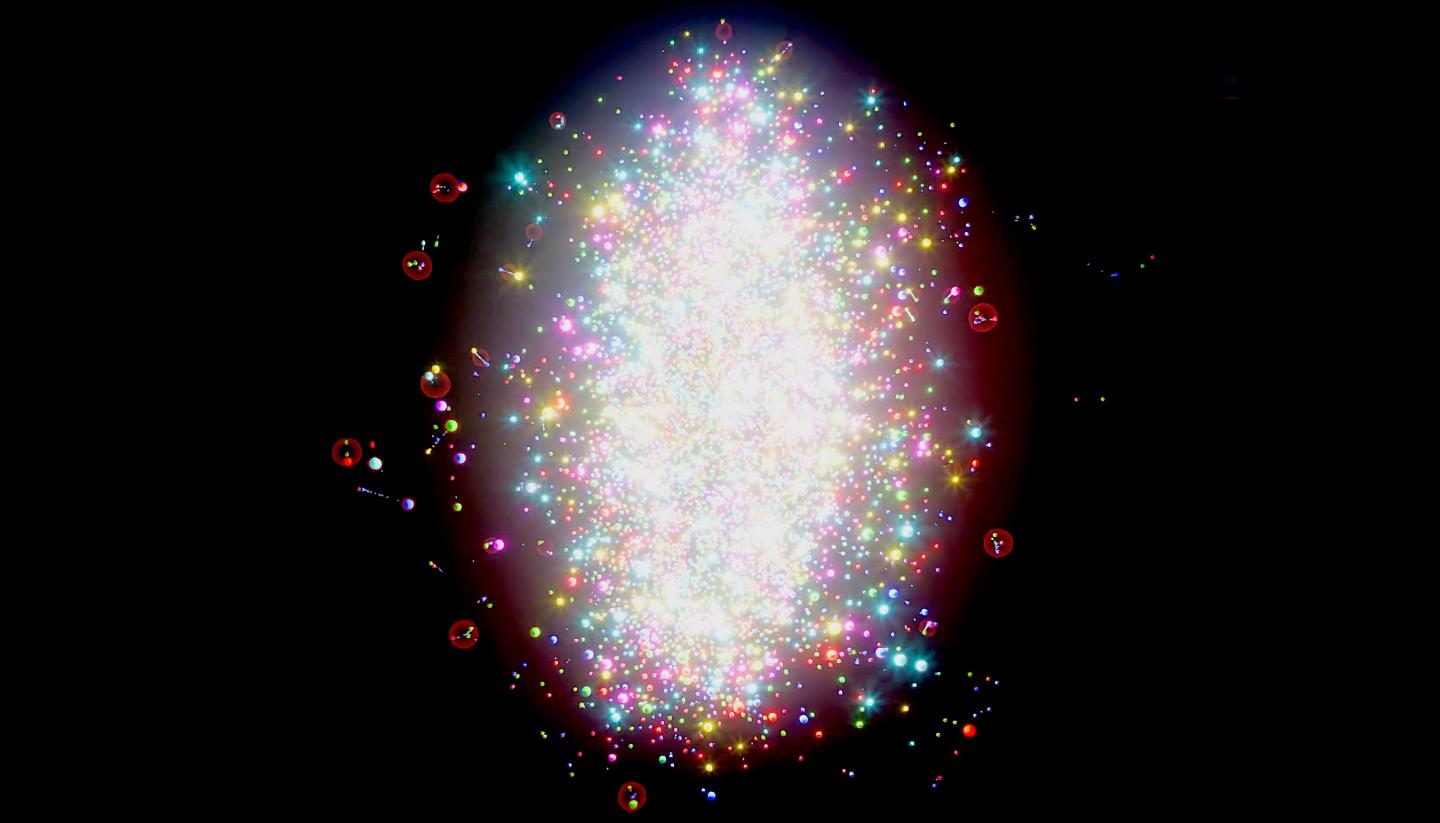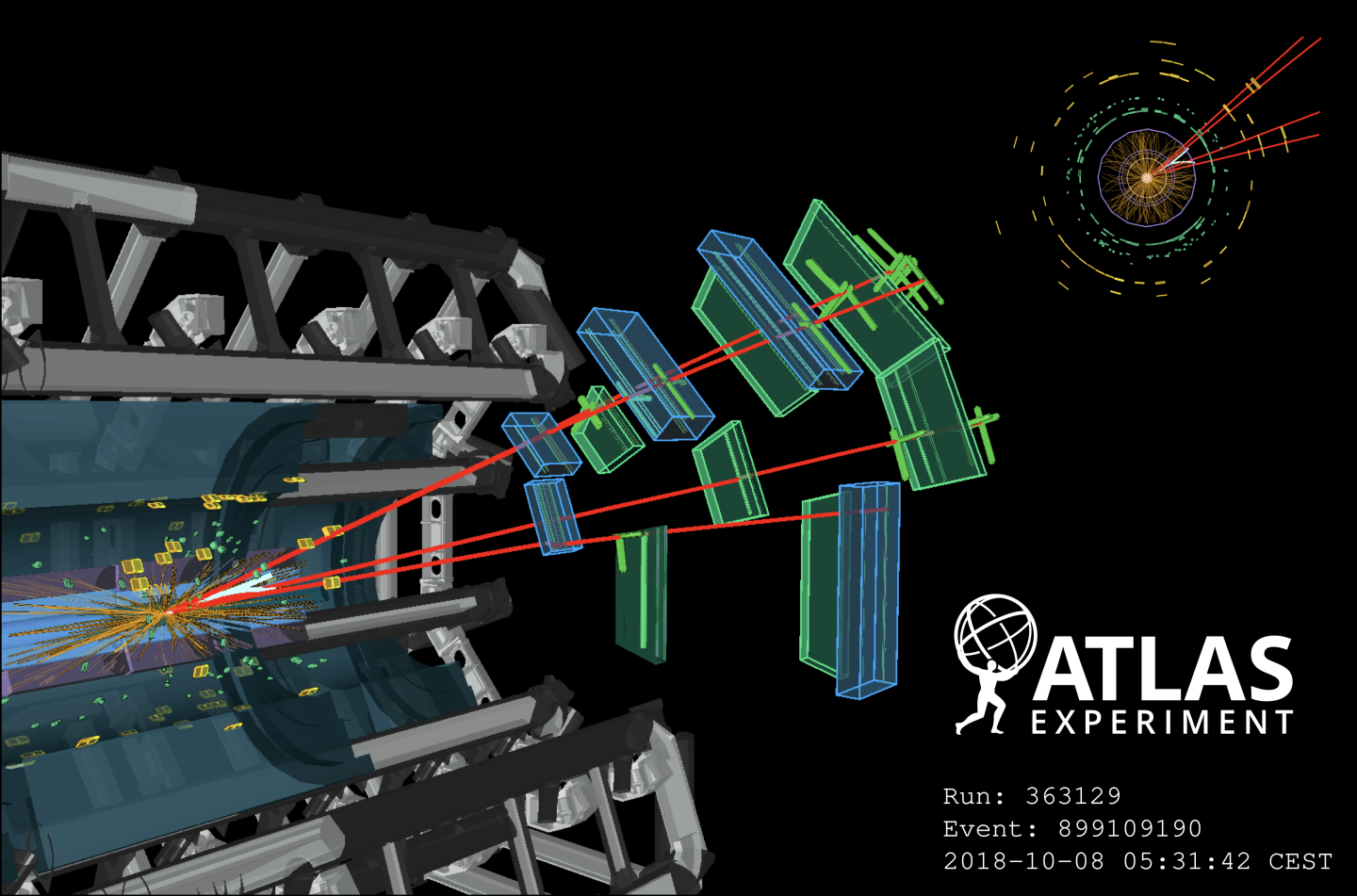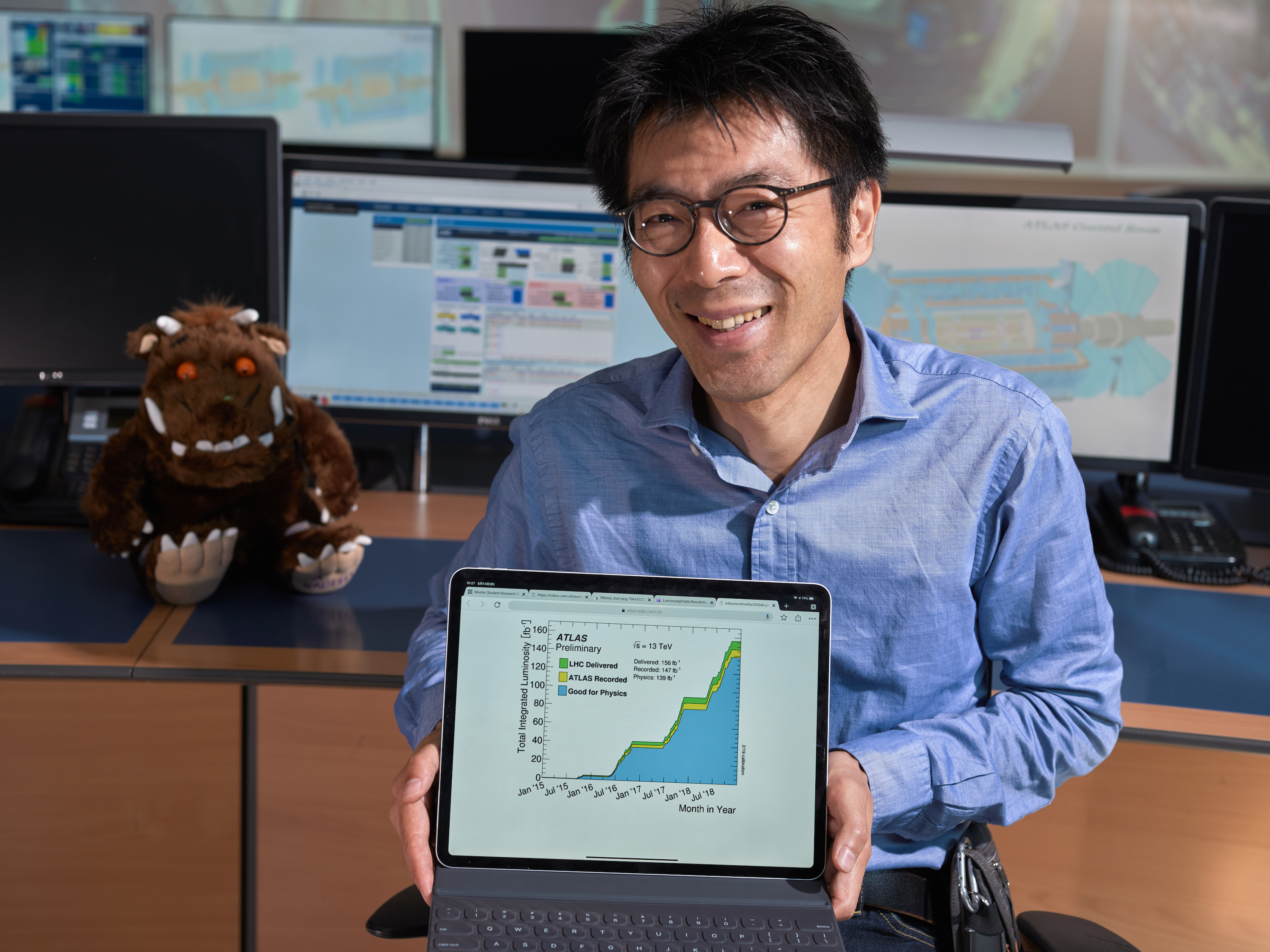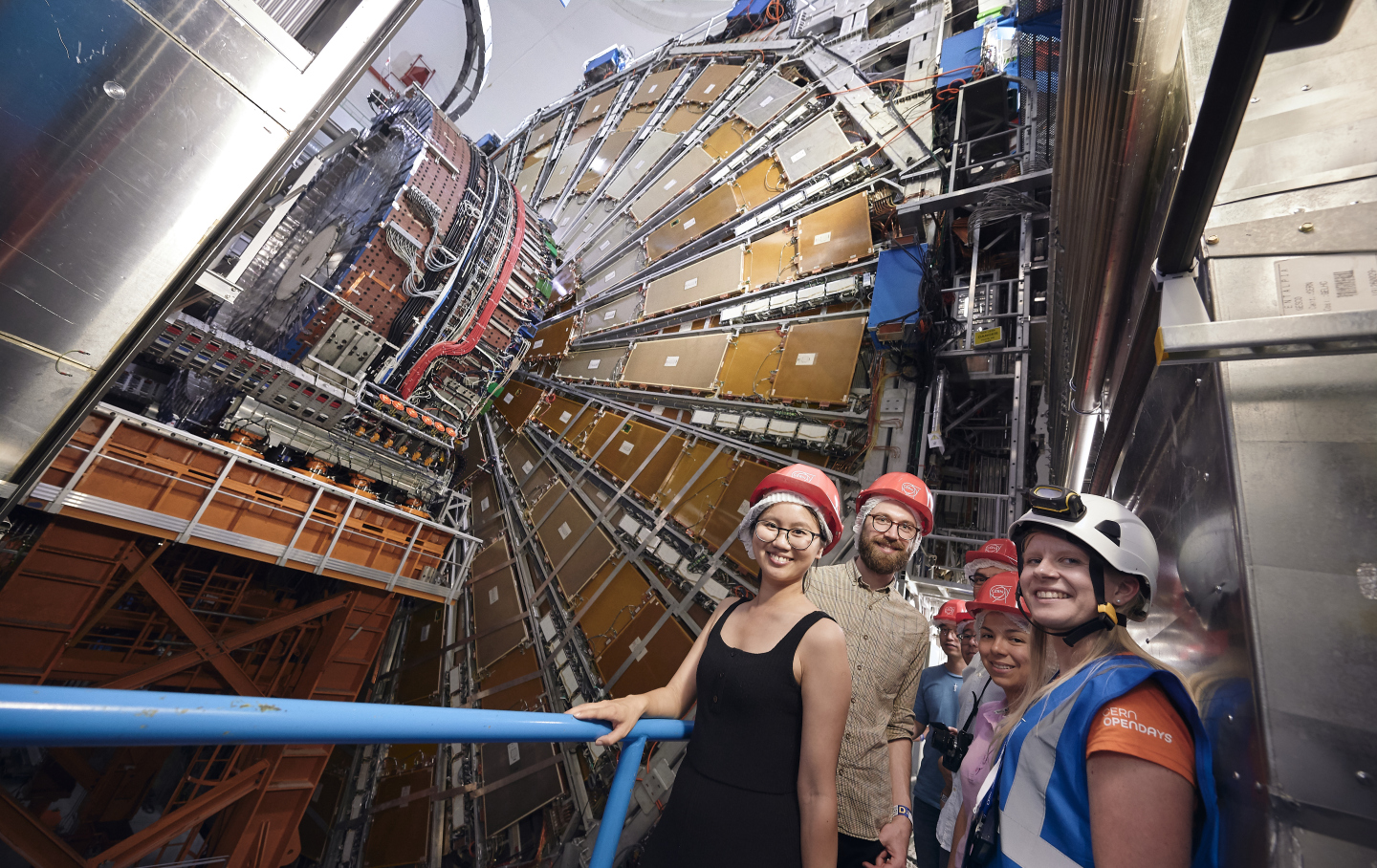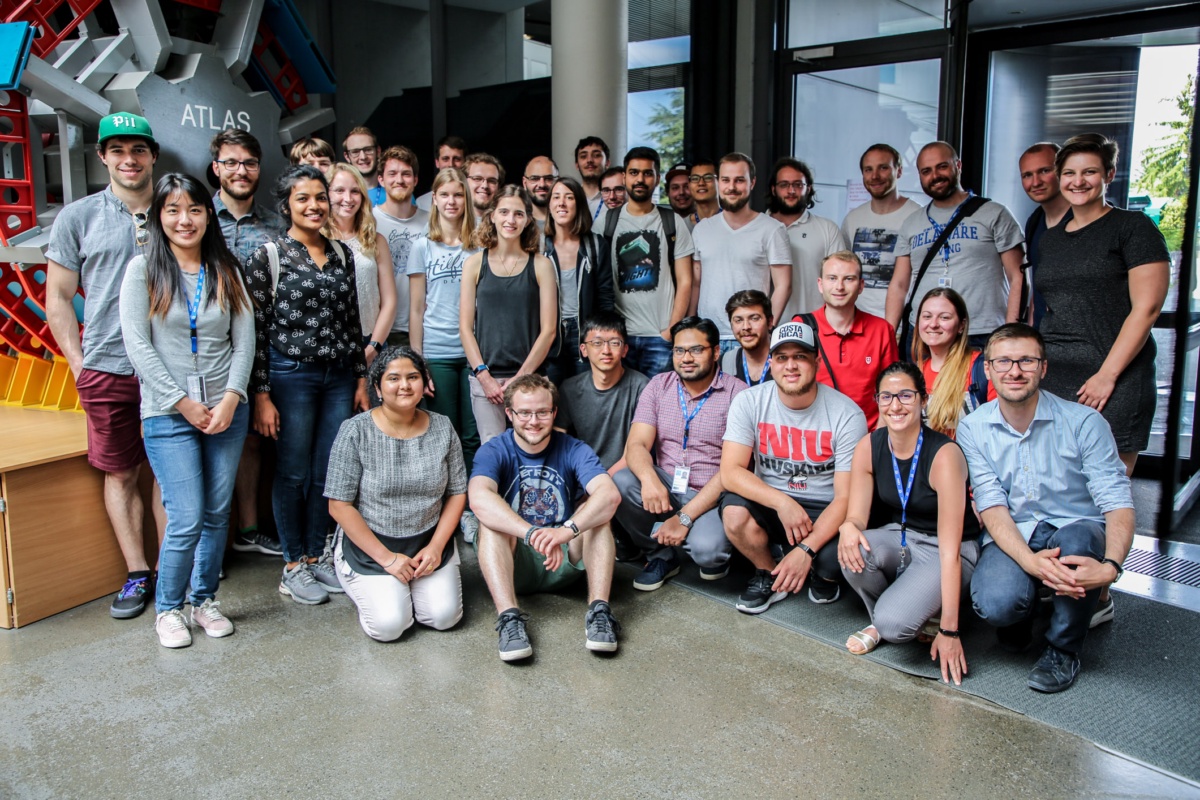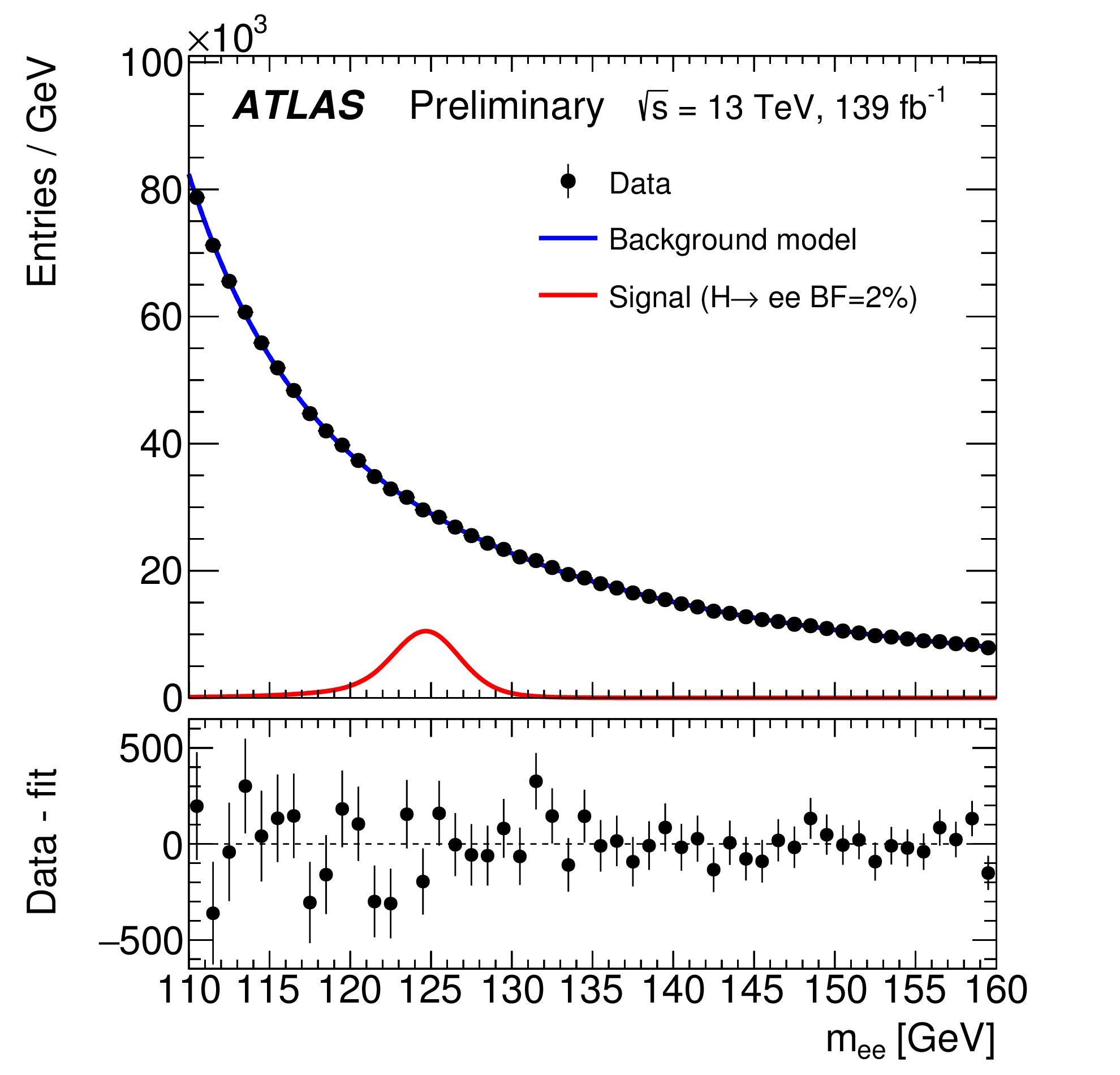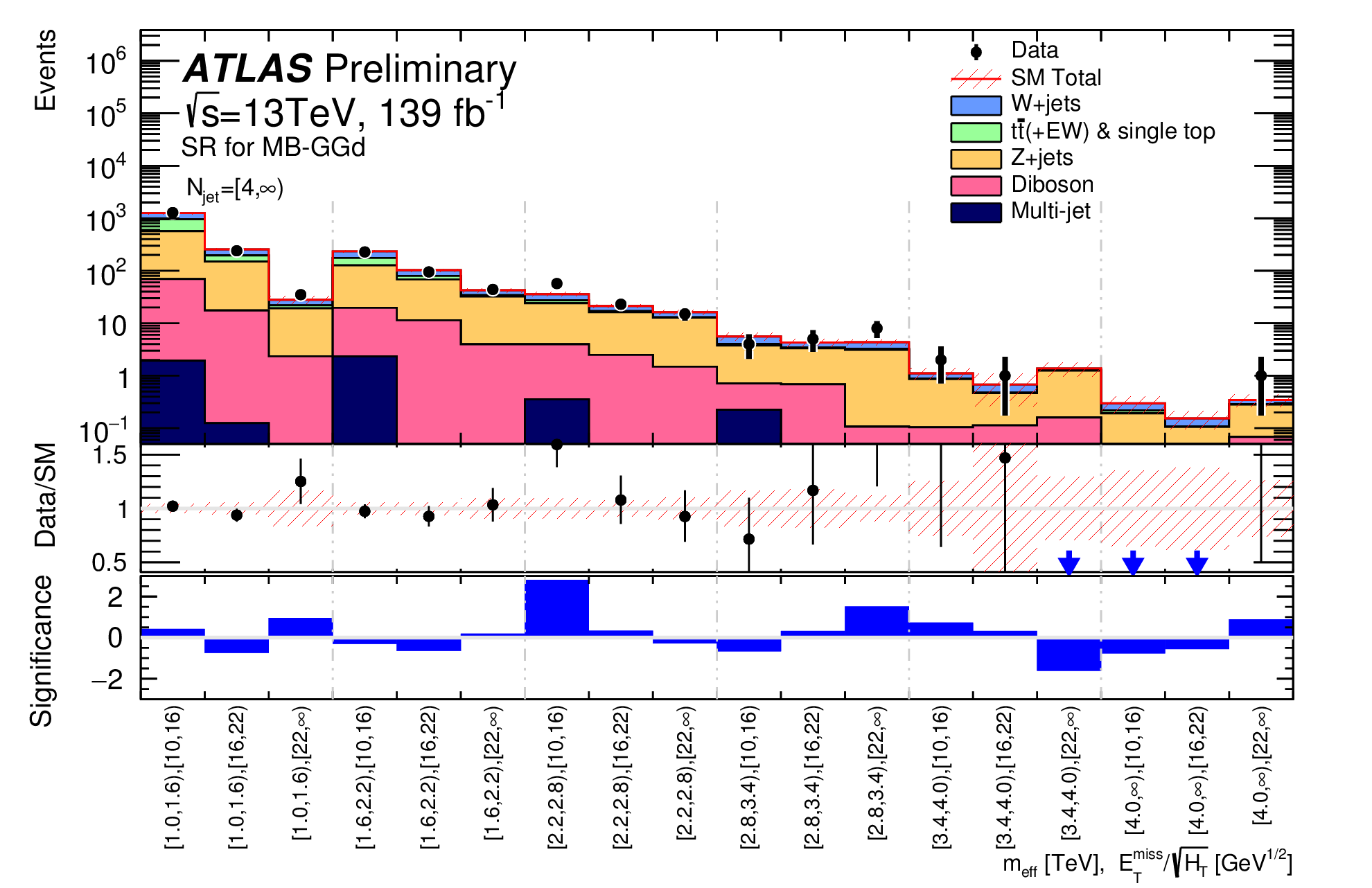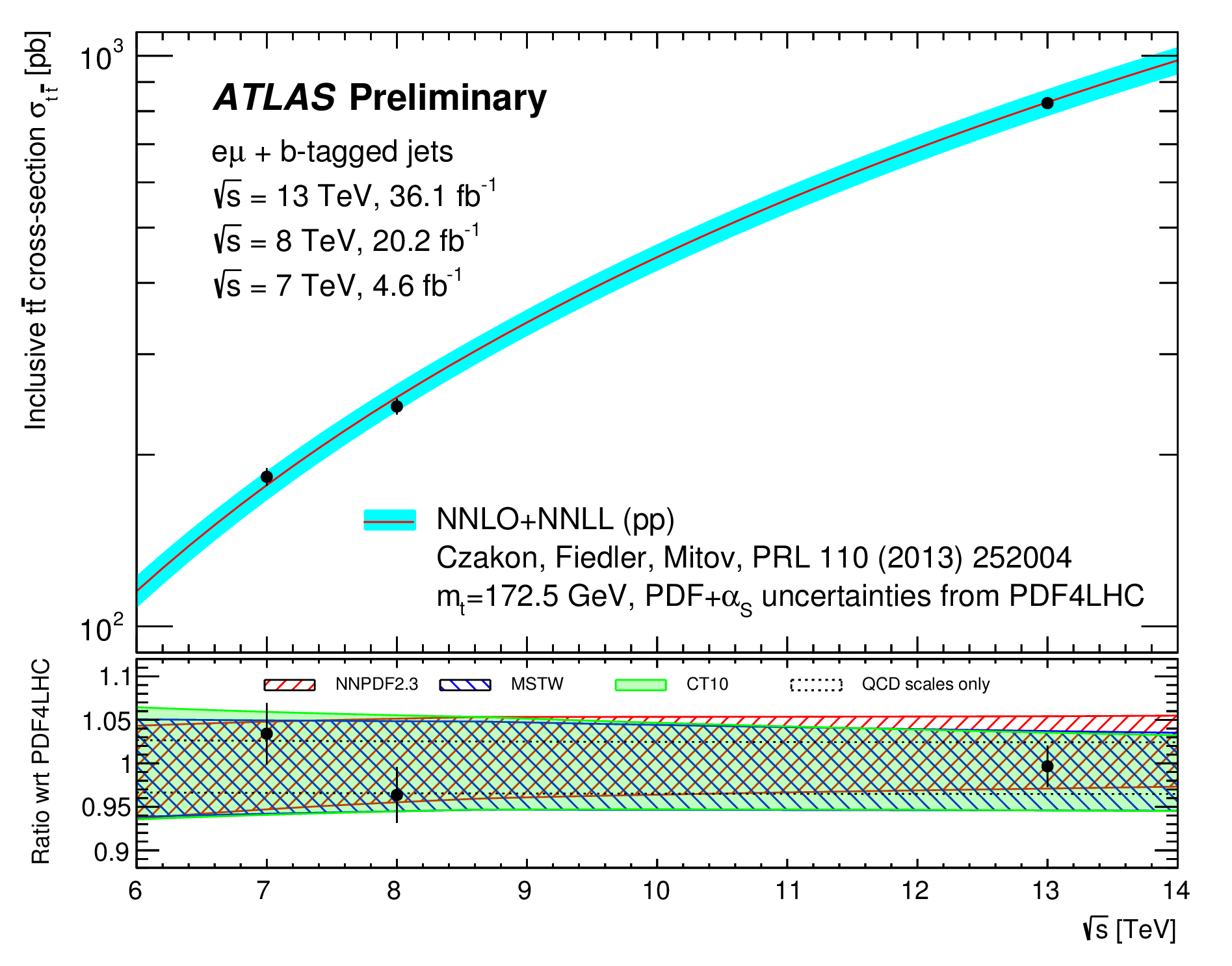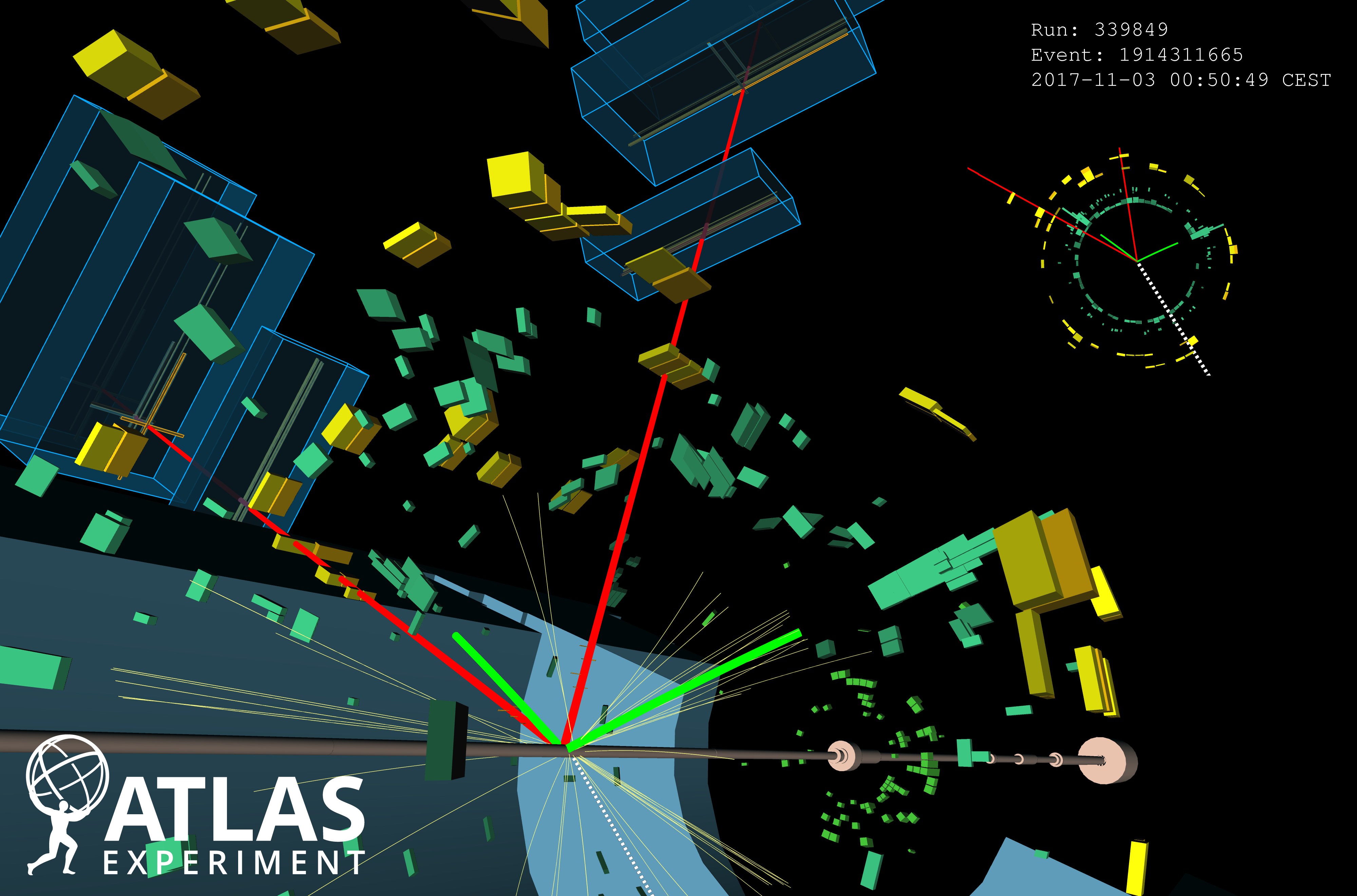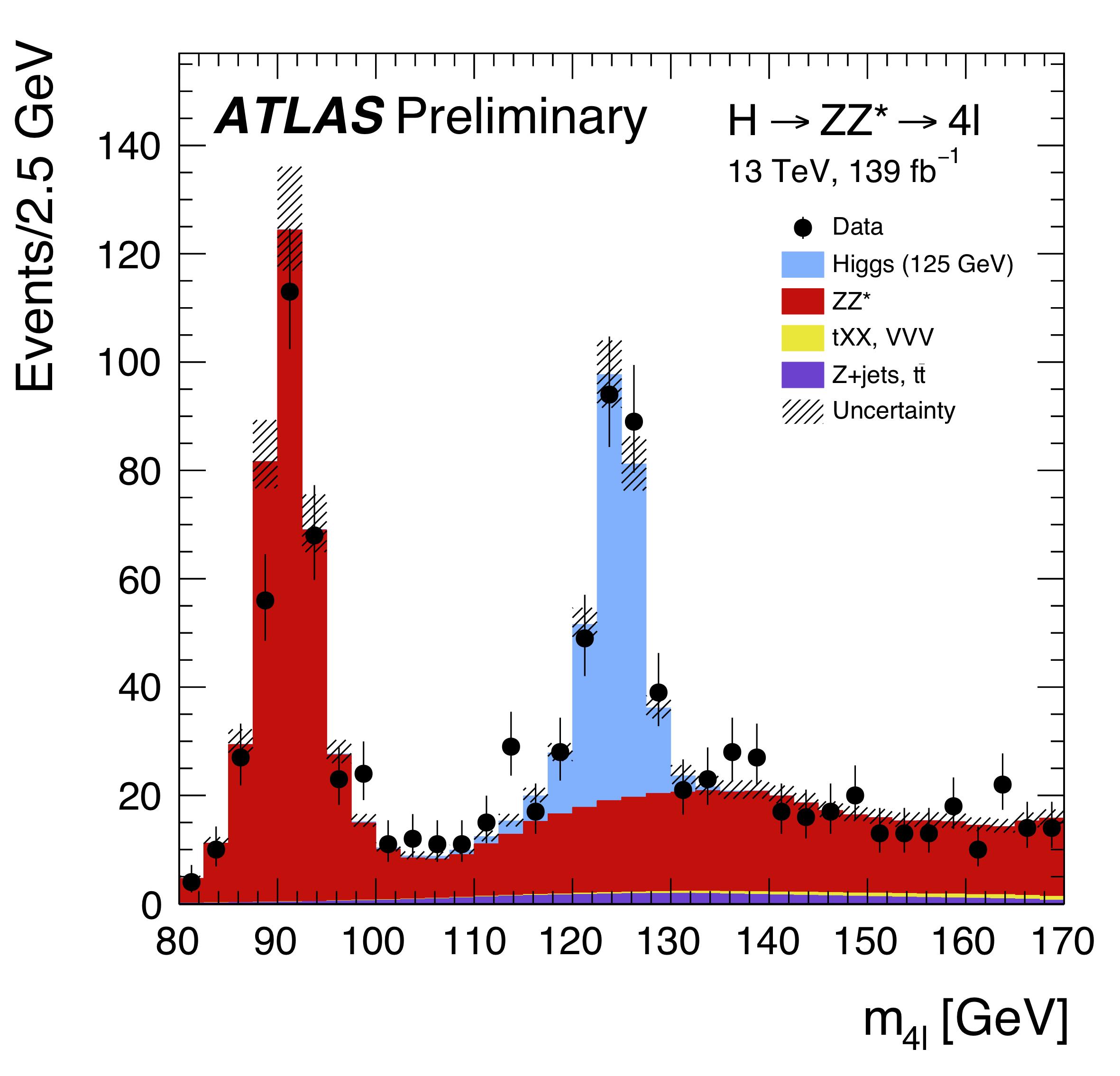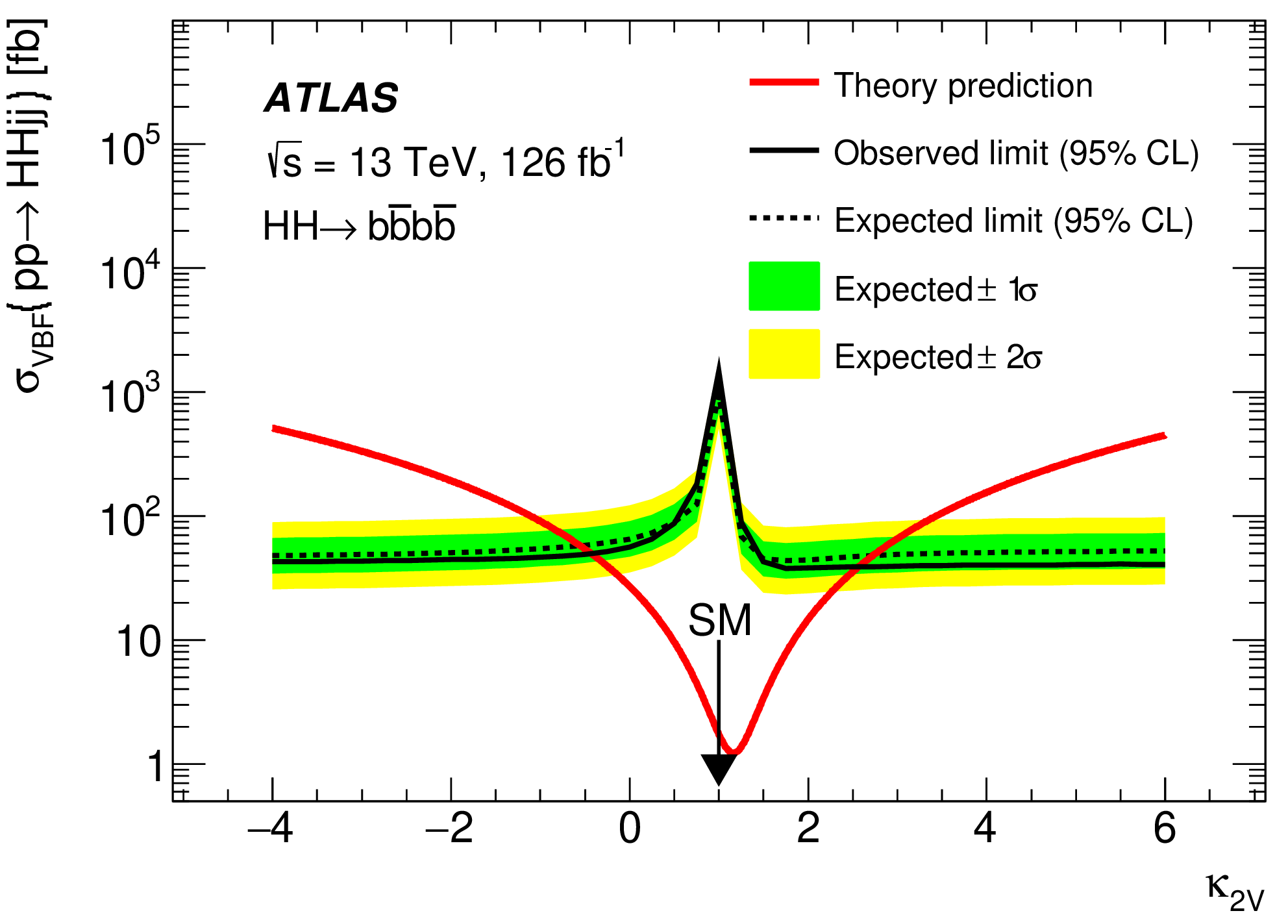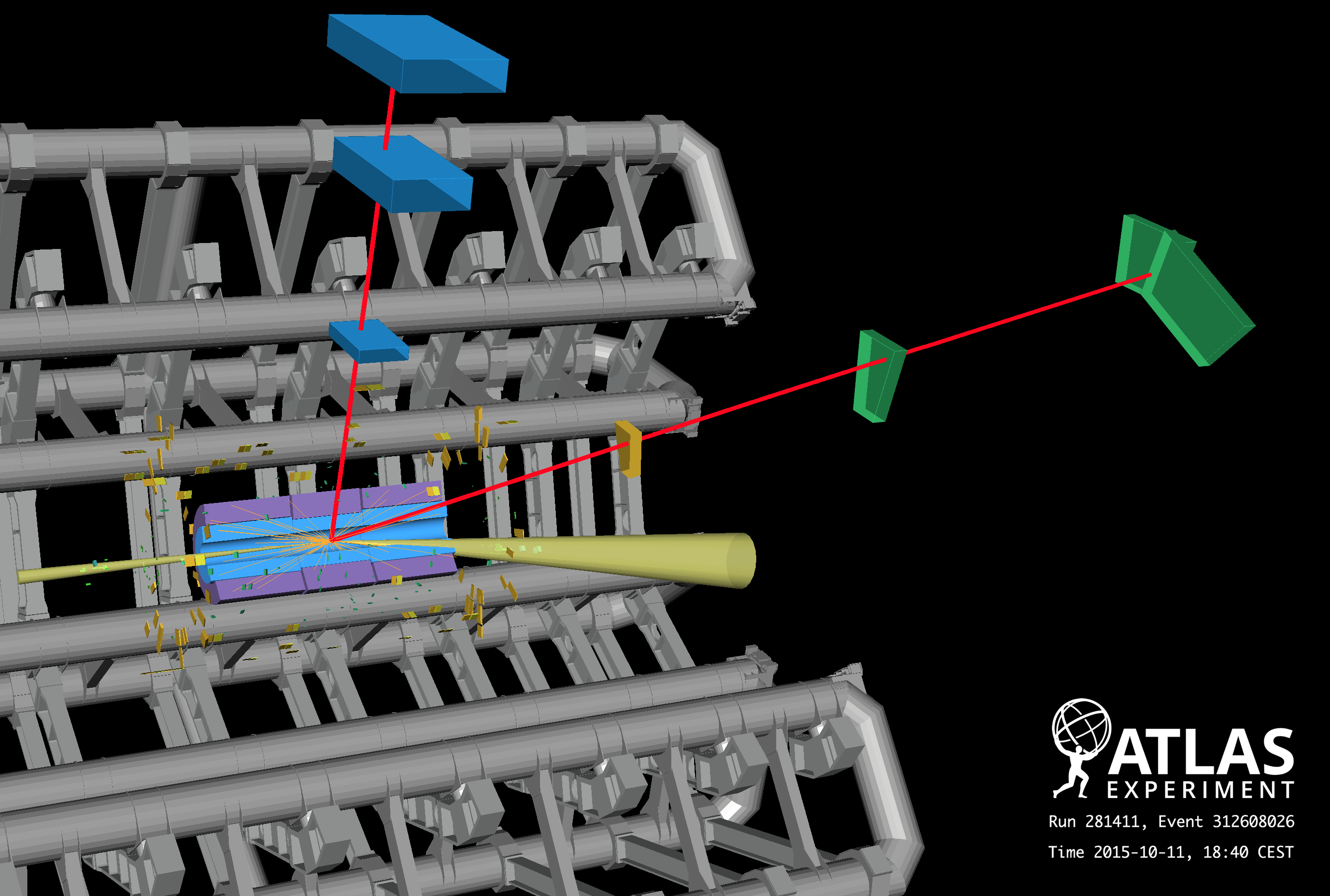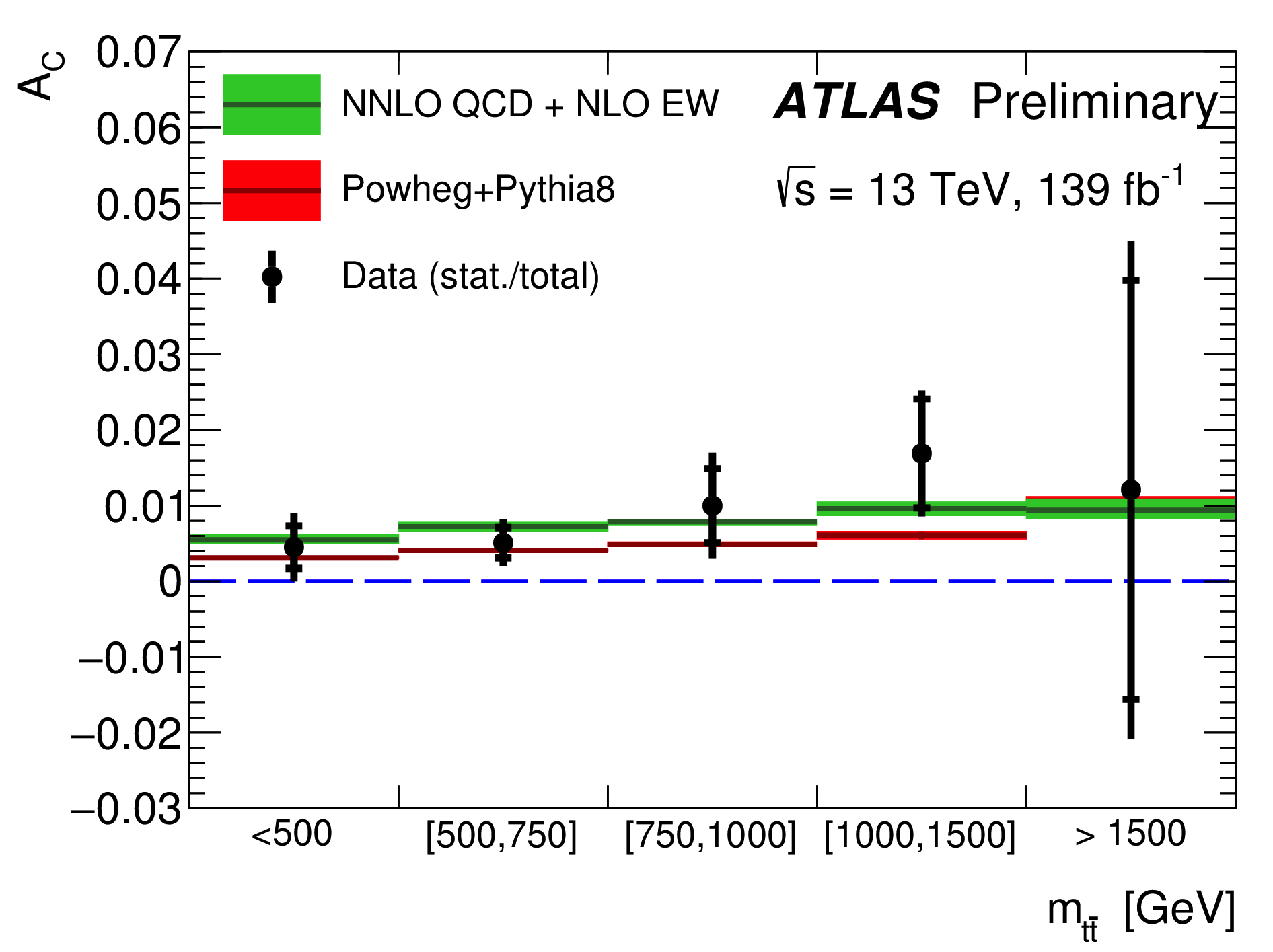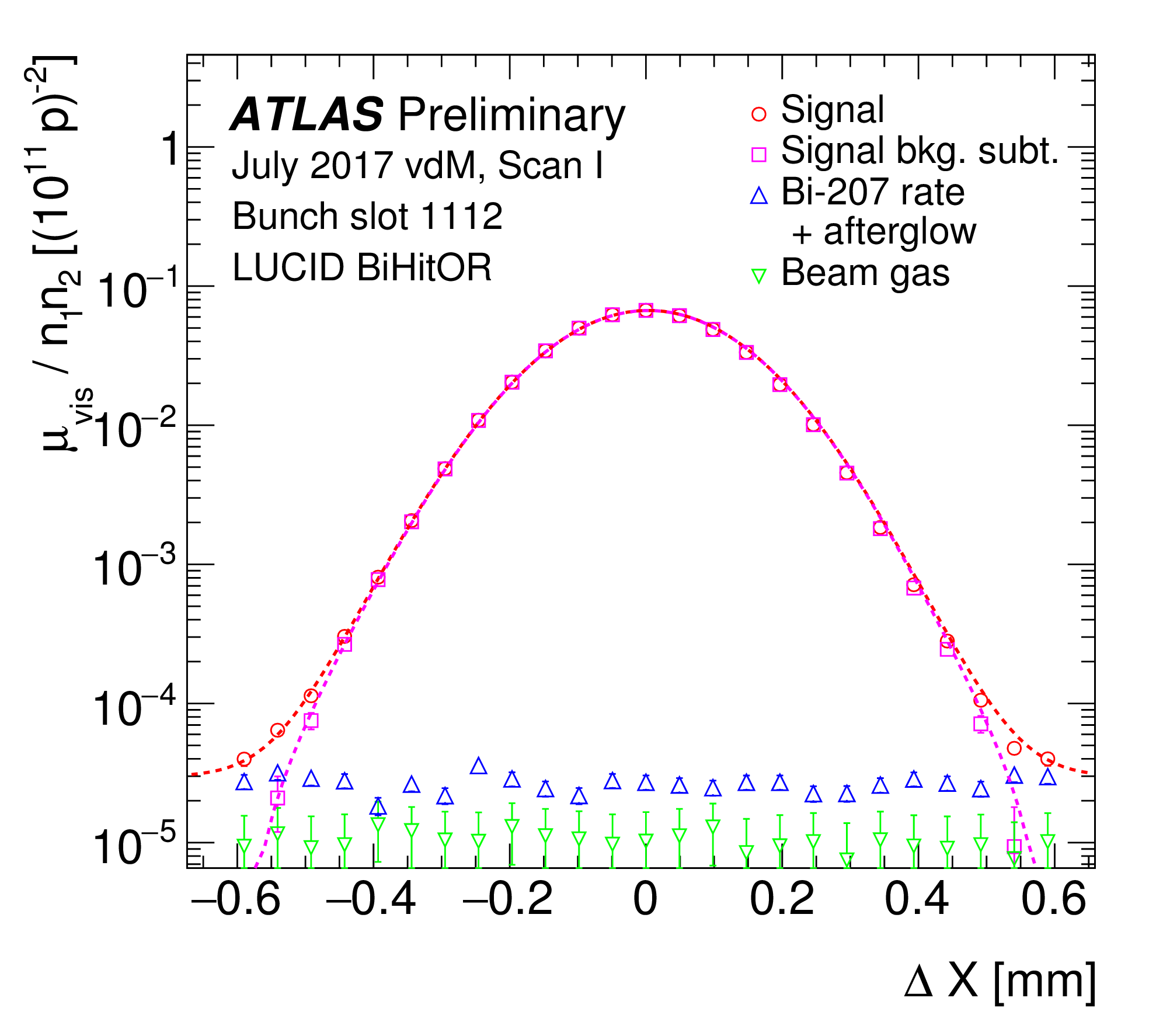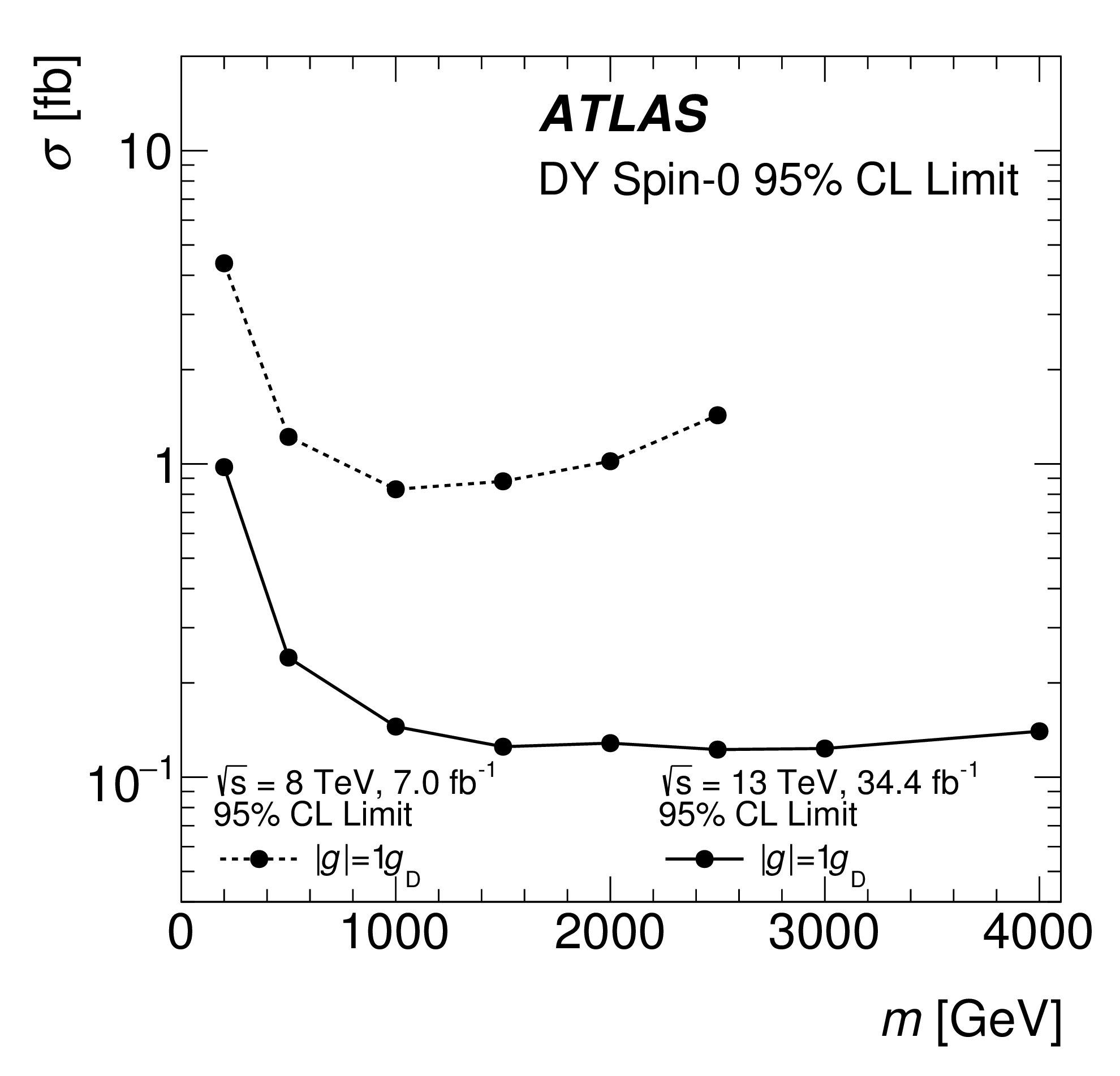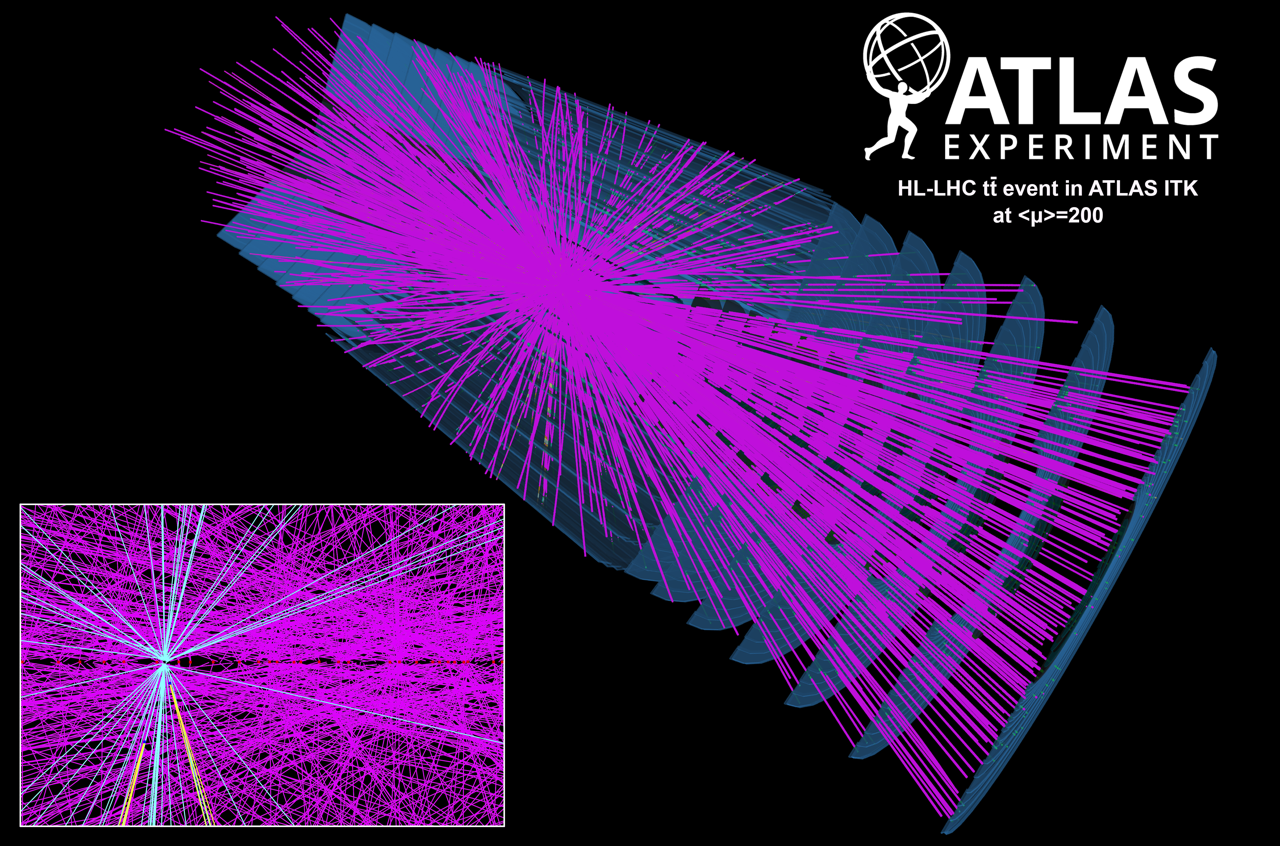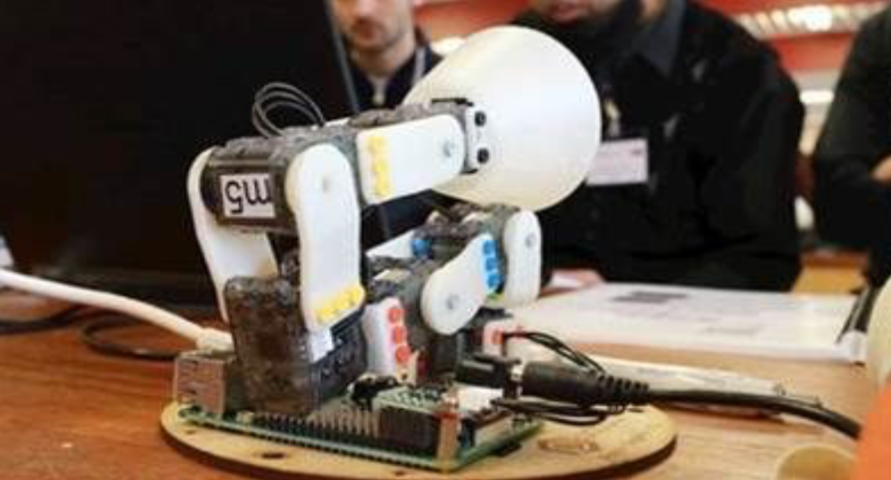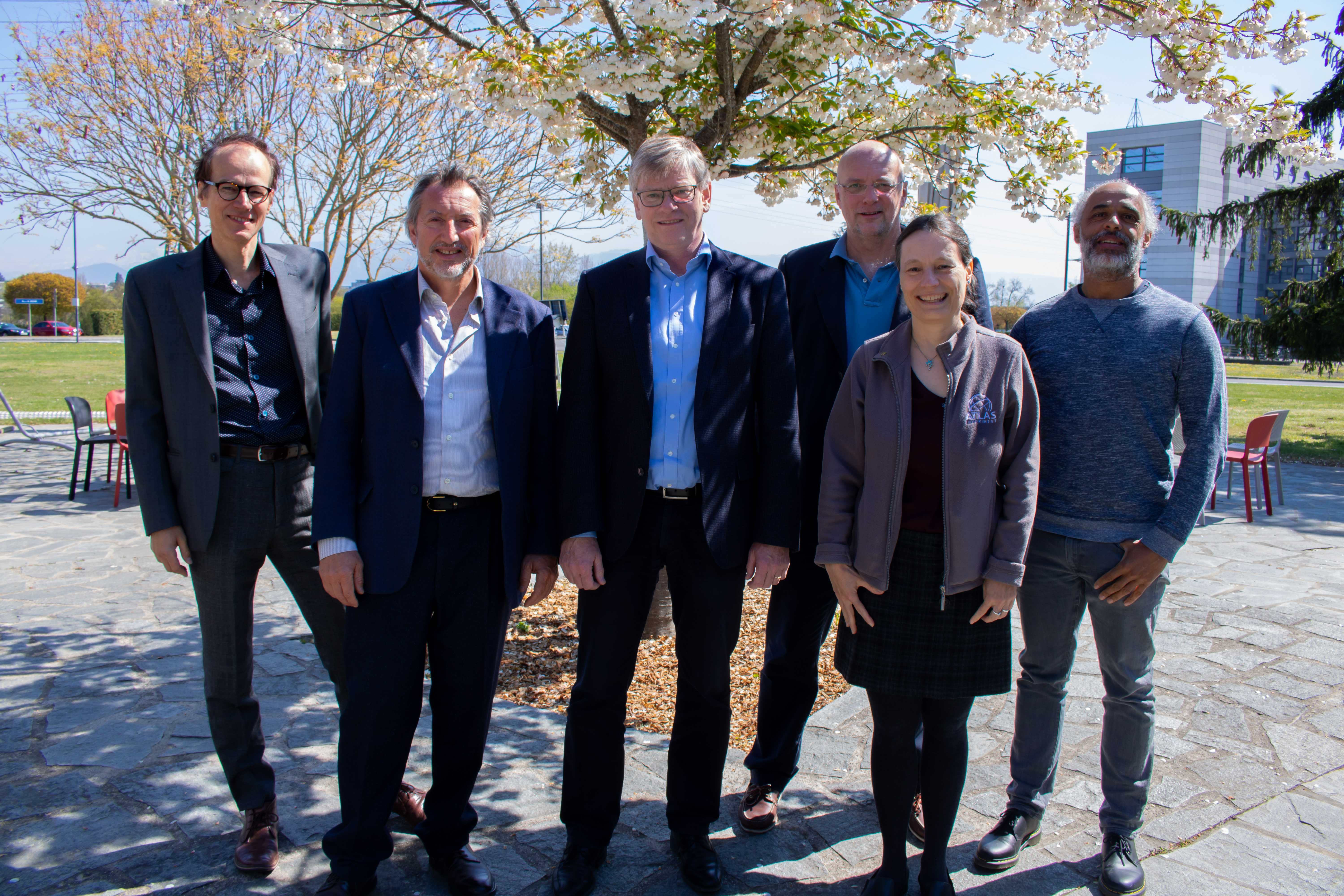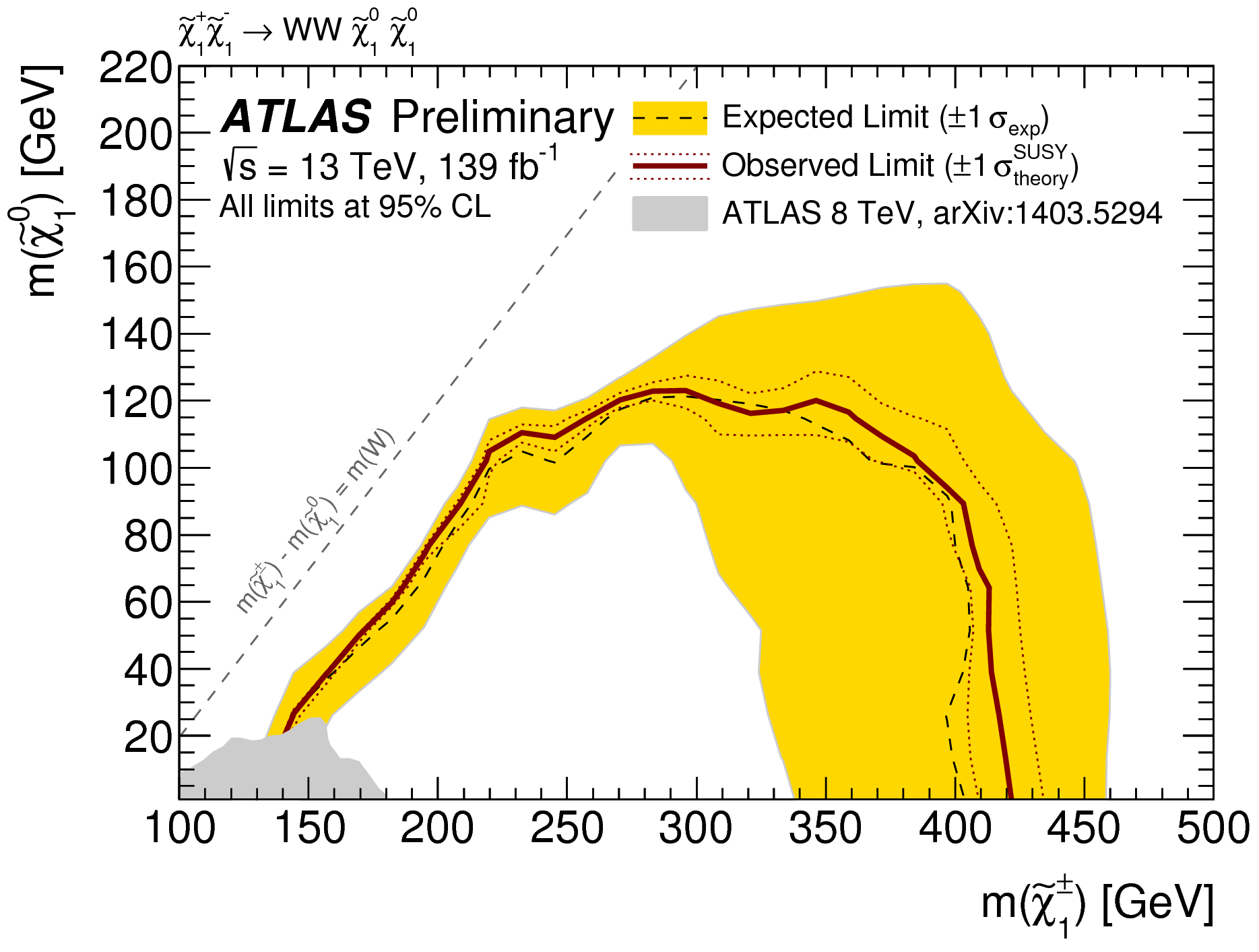Ensuring high-quality data at ATLAS
During Run 2, ATLAS achieved an exceptionally high data-quality efficiency for a hadron collider, with over 95% of the 13 TeV proton-proton collision data certified for physics analysis. In a new paper released today, the ATLAS data quality team summarises how this excellent result was achieved.
In conversation with Masaya Ishino, a key player behind ATLAS' successful Run 2
Masaya Ishino is a researcher and professor with the University of Tokyo. He joined the ATLAS Collaboration in 2001, and has been instrumental to the development, construction and operation of the muon spectrometer. Masaya was elected ATLAS Run Coordinator in 2017, playing a key role in the record-breaking Run 2 operation.
Portrait |
ATLAS highlights from TOP2019
As the heaviest elementary particle, the top quark is appropriately named. It is ideally suited for precision measurements that test the limits of our understanding and could provide indirect hints at new physics. Physicists from around the world gathered in Beijing, China, last week at the annual TOP2019 conference to exchange the latest news, results and ideas on the top quark. For the ATLAS collaboration, TOP2019 proved a great success, with several excellent talks and posters presented by its members.
News |
Record crowds at ATLAS for the CERN Open Days
On 14-15 September 2019, CERN opened its doors to the public for its first Open Days since 2013. This massive event saw over 75,000 visitors descend upon the Organization – many of whom eagerly anticipated underground visits to the LHC and its experiments.
News |
New ATLAS members, welcome on board
This summer was rich with events regularly organised by the ATLAS Early Career Scientists Board (ECSB): Induction Day, Career Q&A and the Ice Cream event. The ECSB is a special advisory group dedicated to assisting the ATLAS Collaboration in building an environment where the full scientific potential of young scientists can be realised. It consists of seven early career scientists, representing various career levels, nationalities, genders and home institutions. I have been in the thick of things as a new member of the ECSB and had a lot of new experiences. Each event was full of fantastic people and brought to its participants tonnes of useful information.
Blog |
ATLAS Experiment welcomes the public for CERN Open Days
The ATLAS Experiment will be opening its doors to the world on 14 and 15 September 2019 for the CERN Open Days. This weekend-long event will be an exciting opportunity for members of the public to explore the world’s largest particle-physics laboratory – host to the most powerful particle accelerator ever built, the Large Hadron Collider (LHC) – and take part in over 100 activities around the CERN campus.
News |
Searching for Higgs boson interactions with the lightest charged lepton
Does the Higgs boson follow all of the rules set by the Standard Model? Since discovering the particle in 2012, the ATLAS and CMS Collaborations have been hard at work studying the behaviour of the Higgs boson. Any unexpected observations could be a sign of new physics beyond the Standard Model.
ATLAS delivers new direct measurement of the top-quark decay width with improved precision
As the heaviest known particle, the top quark plays a key role in studies of fundamental interactions. Due to its short lifetime, the top quark decays before it can turn into a hadron. Thus, its properties are preserved and transferred to its decay products, which can in turn be measured in high-energy physics experiments. Such studies provide an excellent testing ground for the Standard Model and may provide clues for new physics.
ATLAS releases new search for strong supersymmetry
New particles sensitive to the strong interaction might be produced in abundance in the proton-proton collisions generated by the LHC – provided that they aren’t too heavy. These particles could be the partners of gluons and quarks predicted by supersymmetry (SUSY), a proposed extension of the Standard Model of particle physics that would expand its predictive power to include much higher energies. In the simplest scenarios, these “gluinos” and “squarks” would be produced in pairs, and decay directly into quarks and a new stable neutral particle (the “neutralino”), which would not interact with the ATLAS detector. The neutralino could be the main constituent of dark matter.
Zooming in on top-quark production
As the heaviest known elementary particle, the top quark has a special place in LHC physics. Top quark-antiquark pairs are copiously produced in collisions recorded by the ATLAS detector, providing a rich testing ground for theoretical models of particle collisions at the highest accessible energies. Any deviations between measurements and predictions could point to shortcomings in the theory – or first hints of something completely new.
A golden era of exploration: ATLAS highlights from EPS-HEP 2019
Eight years of operation. Over 10,000 trillion high-energy proton collisions. One critical new particle discovery. Countless new insights into our universe. The Large Hadron Collider (LHC) has been breaking records since data-taking began in 2010 – and yet, for ATLAS and its fellow LHC experiments, a golden era of exploration is only just beginning.
News |
New milestone reached in the study of electroweak symmetry breaking
In the Standard Model of particle physics, elementary particles acquire their masses by interacting with the Higgs field. This process is governed by a delicate mechanism: electroweak symmetry breaking (EWSB). Although EWSB was first proposed in 1964, it remains among the least understood phenomena of the Standard Model as a large dataset of high-energy particle collisions is required to probe it.
Exploring the Higgs boson “discovery channels"
This week, at the European Physical Society Conference on High-Energy Physics (EPS-HEP) in Ghent, Belgium, the ATLAS Collaboration at CERN released new measurements of Higgs boson properties using the full LHC Run-2 dataset. Critically, the new results examine two of the Higgs boson decays that led to the particle’s discovery in 2012: H→ZZ*→4ℓ, where the Higgs boson decays into two Z bosons, in turn decaying into four leptons (electrons or muons); and H → γγ, where the Higgs boson decays directly into two photons.
Double the Higgs for double the difficulty
A key interaction not yet observed by LHC experiments is the production of “double Higgs”. The Standard Model predicts that the Higgs field can interact with itself to create a Higgs boson pair. The rate with which this happens is critical, as it allows physicists to directly probe the potential energy of the Higgs field, which is responsible for mass of particles. Deviations from the expectation would be a strong hint of new physics.
ATLAS searches for rare Higgs boson decays into muon pairs
Today, at the European Physical Society Conference on High-Energy Physics (EPS-HEP) in Ghent, Belgium, the ATLAS Collaboration released a new preliminary result searching for Higgs boson decays to a muon and antimuon pair (H → μμ). The new, more sensitive result uses the full Run-2 dataset, analysing almost twice as many Higgs boson events as the previous ATLAS result.
ATLAS finds evidence of charge asymmetry in top-quark pairs
Among the most intriguing particles studied by the ATLAS collaboration is the top quark. As the heaviest known fundamental particle, it plays a unique role in the Standard Model of particle physics and – perhaps – in yet unseen physics beyond the Standard Model. A new ATLAS result, presented today at the European Physical Society Conference on High-Energy Physics (EPS-HEP) in Ghent, Belgium, examines the full Run 2 dataset to find evidence of charge asymmetry in top-quark pair events, with a significance of four standard deviations.
Summary of new ATLAS results for EPS-HEP 2019
ATLAS physicists are in Ghent, Belgium, this week for the European Physical Society Conference on High-Energy Physics (EPS-HEP) 2019. Since its establishment in 1971, the EPS-HEP conference has brought together the high-energy particle physics community every two years to discuss the latest results in field. This year, several hundred physicists from around the world are expected to attend.
News |
In conversation with Zachary Marshall, a leading voice in the search for new physics
Simulation and supersymmetry, two things that have defined Zachary Marshall’s career. Zach is a researcher with Lawrence Berkeley National Lab. He is currently the co-convener of the ATLAS Supersymmetry group, leading the team searching for supersymmetry and all its various manifestations, building on his previous work as convenor of the ATLAS Simulation group.
Portrait |
ATLAS delivers its most precise luminosity measurement yet
The large amount of data delivered by the LHC in Run 2 (2015-2018) has not only allowed the ATLAS Experiment to probe previously unexplored territory for rare Standard Model processes and new physics, but also to measure already known processes to better precision. In both cases, but particularly the latter, a precise measurement of the integrated luminosity of the dataset is essential. In other words, how many proton collisions actually occurred in ATLAS during Run 2.
ATLAS releases new result in hunt for mysterious magnetic monopoles
Dipole magnets are probably the best-known source of magnetic fields. They consist of a north and south pole; while one end magnetically attracts, the opposite repels. If you cut a magnet in half, you are left with two magnets, each with its own north and south pole. This apparent absence of an isolated magnetic pole - or “magnetic monopole” - has puzzled physicists for more than a century. It would seem perfectly natural for this particle to be present in our universe; Maxwell’s equations would reflect complete symmetry between electricity and magnetism if particles with magnetic charge were observed. So far the mystery remains: while every known particle in our universe is either electrically charged or neutral, none have been found to be magnetically charged.
Searching for Electroweak SUSY: not because it is easy, but because it is hard
Exploring the scientific potential of the ATLAS experiment at the High-Luminosity LHC
The High-Luminosity upgrade of the Large Hadron Collider (HL-LHC) is scheduled to begin colliding protons in 2026. This major improvement to CERN’s flagship accelerator will increase the total number of collisions in the ATLAS experiment by a factor of 10. To cope with this increase, ATLAS is preparing a complex series of upgrades including the installation of new detectors using state-of-the-art technology, the replacement of ageing electronics, and the upgrade of its trigger and data acquisition system.
News |
Ten days of Trigger and Data Acquisition at ISOTDAQ
This April marked the 10th anniversary of the International School of Trigger and Data Acquisition (ISOTDAQ). It was a fantastic event that united researchers in physics, computing and engineering, ranging from undergraduate students to post-doctoral scientists. The goal of the school was to teach the "arts and crafts" of triggering and data-acquisition for high-energy physics experiments through a series of lectures and hands-on laboratory exercises.
Blog |
ATLAS Management enters new term
The management of the ATLAS experiment begins a new term this Spring, with Spokesperson Karl Jakobs (University of Freiburg) continuing to steer the collaboration through Long Shutdown 2 to the start of Run 3 of the Large Hadron Collider (LHC).
News |
ATLAS sets strong constraints on supersymmetric dark matter
One of the most complete theoretical frameworks that includes a dark matter candidate is supersymmetry. Dark matter is an unknown type of matter present in the universe, which could be of particle origin. Many supersymmetric models predict the existence of a new stable, invisible particle - the lightest supersymmetric particle (LSP) – which has the right properties to be a dark matter particle. The ATLAS Collaboration has recently reported two new results on searches for an LSP where it exploited the experiment’s full “Run 2” data sample taken at 13 TeV proton-proton collision energy. The analyses looked for the pair production of two heavy supersymmetric particles, each of which decays to observable Standard Model particles and an LSP in the detector.


